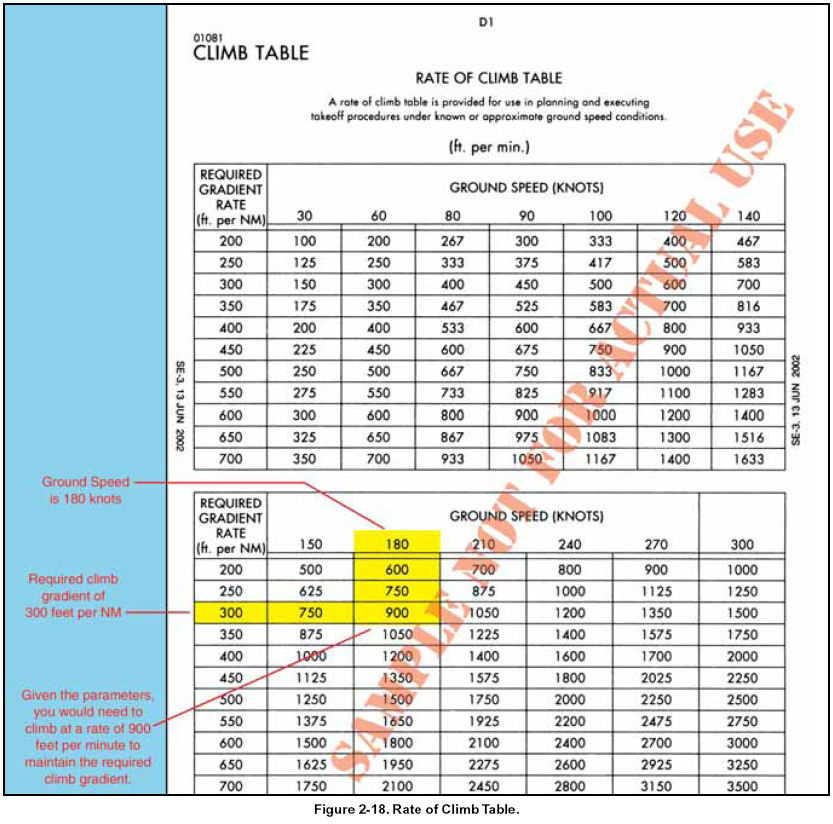 |
|
| INSTRUMENT PROCEDURES HANDBOOK |
|
DEPARTURES FROM AIRPORTS WITHOUT AN OPERATING CONTROL TOWER There are hundreds of airports across the U.S. that operate successfully everyday without the benefit of a control tower. While a tower is certainly beneficial when departing IFR, most other departures can be made with few challenges. As usual, you must file your flight plan at least 30 minutes in advance. During your planning phase, investigate the departure airport’s method for receiving an instrument clearance. You can contact the Automated Flight Service Station (AFSS) on the ground by telephone and they will request your clearance from ATC. Typically, when a clearance is given in this manner, the clearance includes a void time. You must depart the airport before the clearance void time; if you fail to depart, you must contact ATC by a specified notification time, which is within 30 minutes of the original void time. After the clearance void time, your reserved space within the IFR system is released for other traffic. There are several other ways to receive a clearance at a non-towered airport. If you can contact the AFSS or ATC on the radio, you can request your departure clearance. However, these frequencies are typically congested and they may not be able to provide you with a clearance via the radio. You also can use a Remote Communications Outlet (RCO) to contact an AFSS if one is located nearby. Some airports have licensed UNICOM operators that can also contact ATC on your behalf and in turn relay your clearance from ATC. You are also allowed to depart the airport VFR if conditions permit and contact the controlling authority and request your clearance in the air. As technology improves, new methods for delivery of clearances at non-towered airports are being created. GROUND COMMUNICATIONS OUTLETS A new system, called a Ground Communication Outlet (GCO), has been developed in conjunction with the FAA to provide pilots flying in and out of non-towered airports with the capability to contact ATC and AFSS via Very High Frequency (VHF) radio to a telephone connection. This lets pilots obtain an instrument clearance or close a VFR/IFR flight plan. You can use four key clicks on your VHF radio to contact the nearest ATC facility and six key clicks to contact the local AFSS, but it is intended to be used only as a ground operational tool. A GCO is an unstaffed, remote controlled ground-to-ground communication facility that is relatively inexpensive to install and operate. Installations of these types of outlets are scheduled at instrument airports around the country. GCOs are manufactured by different companies including ARINC and AVTECH, each with different operating characteristics but with the ability to accomplish the same goal. This latest technology has proven to be an incredibly useful tool for communicating with the appropriate authorities when departing IFR from a non-towered airport. The GCO should help relieve the need to use the telephone to call ATC and the need to depart into marginal conditions just to achieve radio contact. GCO information is listed on airport charts and instrument approach charts with other communications frequencies. Signs may also be located on an airport to notify you of the frequency and proper usage. OBSTACLE AVOIDANCE Safety is always the foremost thought when planning and executing an IFR flight. As a result, the goal of all departure procedures is to provide a means for departing an airport in the safest manner possible. It is for this reason that airports and their surroundings are reviewed and documented and that procedures are put in place to prevent flight into terrain or other man-made obstacles. To aid in the avoidance of obstacles, takeoff minimums and departure procedures use minimum climb gradients and “see and avoid” techniques. CLIMB GRADIENTS AND CLIMB RATES You are required to contact ATC if you are unable to comply with climb gradients and climb rates. It is also expected that you are capable of maintaining the climb gradient outlined in either a standard or non-standard SID or ODP. If you cannot comply with the climb gradient in the SID, you should not accept a clearance for that SID. If you cannot maintain a standard climb gradient or the climb gradient specified in an ODP, you must wait until you can depart under VMC. Climb gradients are developed as a part of a departure procedure to ensure obstacle protection as outlined in TERPS. Once again, the rate of climb table depicted in Figure 2-18, used in conjunction with the performance specifications in your airplane flight manual (AFM), can help you determine your ability to comply with climb gradients.
SEE AND AVOID TECHNIQUES Meteorological conditions permitting, you are required to use “see and avoid” techniques to avoid traffic, terrain, and other obstacles. To avoid obstacles during a departure, the takeoff minimums may include a non-standard ceiling and visibility minimum. These are given to pilots so they can depart an airport without being able to meet the established climb gradient. Instead, they must see and avoid obstacles in the departure path. In these situations, ATC provides radar traffic information for radar-identified aircraft outside controlled airspace, workload permitting, and safety alerts to pilots believed to be within an unsafe proximity to obstacles or aircraft.
|
